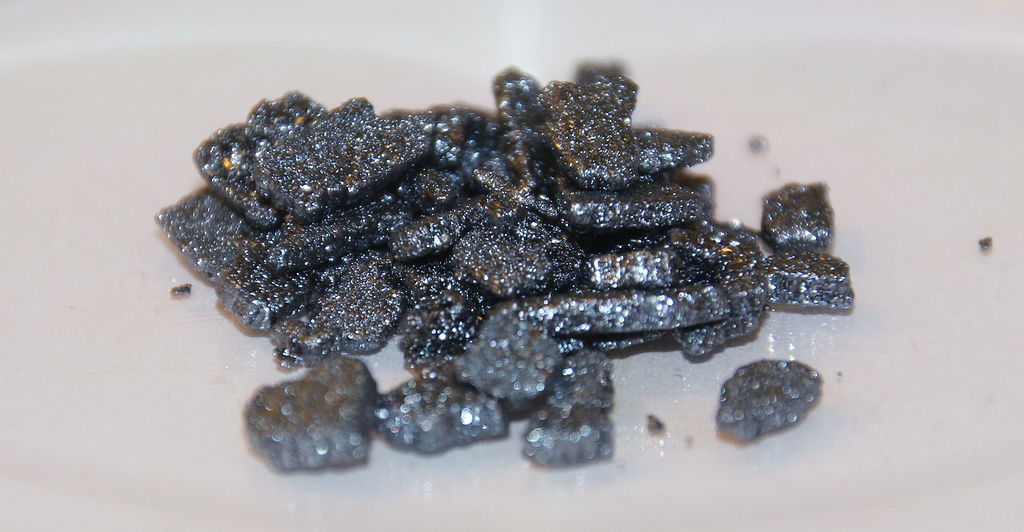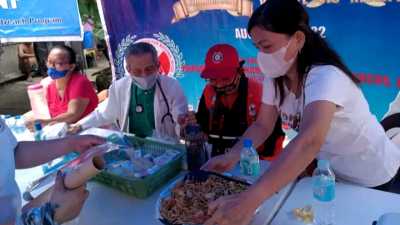What are Biochemic Salts?
- By Jose
- 01 Feb, 2023

Biochemic Salts, also known as tissue salts, was developed in the late 1800’s by Dr William H. Schuessler, a German physician.
Dr. Schuessler was originally a homeopath but eventually distanced himself from homeopathy because of the unmanageable amount of medications it offered. He developed “Biochemistry according to Schuessler”.
His theory stated that most illnesses are based on a disturbance of the mineral balance in the body. A deficiency of minerals in the body has an effect on the overall metabolism.
He recognized that 12 of the inorganic salts found in us have specific physiologic functions. He maintained that these tissue salts or ‘cell salts’ are vital mineral constituents of the body.
They combine with organic substances in the body to produce and maintain the infinite number of cells and tissues of which the human body is composed.
Thus, any cell salt deficiency or imbalance may result in an illness. Dr. Schuessler found that if the body was lacking in any of these salts, loss of health occurred. If this deficiency was corrected with homeopathic (micro-dose) preparation of these salts, the body could heal itself.
Schuessler Salts
Schuessler Salts are inorganic minerals found in nature as a salt.
They form part of the composition of the earth and are listed in the Periodic Table. Minerals in the body conduct energy much like electric wires carry current and a lack of current or energy causes weakness or failure of affected cells.
However, the aim of the Schuessler Salts is not to supply the body with the deficient minerals. They are meant to stimulate the human body to improve the absorption of the lacking minerals from ingested food.
It is important to note that the Schuessler Biochemic Tissue Salts are NOT drugs, but valuable micro-dose mineral cell foods prepared homeopathically in a form which ensures rapid and easy assimilation, for the speedy restoration of the natural balance of the body system.
• Aids recovery from poor nutrition and lowered vitality.
• Helps in cases of nervous tension and nervous exhaustion.
• Helps the structure of skin and nails and to reject purulent infection.
• Helps in Rheumatism and digestive ailments.
• Helps respiratory problems, blood health, sore throats and bleeding.
• Rejuvenates the body’s organs and provides long-term alleviation of symptoms.
• Invigorates your energy levels keeping you active the whole day.
• Helps to boost your immune system.
Basic Principles of The Theory Of Biochemical Treatment
Our body is made of cells. Different kinds of cells build up the different tissues and organs of the body.
The difference in the cells is largely determined by the kind of INORGANIC SALTS which enter into their composition. If we burn the body or any part of it, we obtain the ashes.
These are inorganic constituents of the body (the SALTS of iron, magnesium, calcium, potassium, sodium) which build up the tissues.
Besides these inorganic salts, the body is composed of water and organic substances in the proportion of 1/20th of the inorganic salts to the remainder of water and ORGANIC matter, but the latter, is INERT and USELESS without the inorganic cell salts.[1]
HEALTH is the state of the body when all the cells composing the various tissues are in a NORMAL condition and they are kept in this state when they each receive the requisite quantity of the needful cell salt.
The BIOCHEMIC SYSTEM of MEDICINE was first introduced by Dr. Wilhelm Heinrich Schuessler, MD of Oldenburg, Germany.
He had researched the many roles of minerals in the human body. He observed that if the body became DEFICIENT in any of these important minerals, a DISEASED condition occurs. He further studied the various symptoms and discovered which minerals are lacking in his patients.
Dr. Schuessler says, “The inorganic substances in the blood and tissues are sufficient to heal all the diseases which are curable.”
Dr. Schuessler’s Biochemic Theory
- The human body contains 12 vital Biochemical Tissue Salts which are responsible for maintenance of normal cell function.
- When from some cause, one or more of these substances become deficient the normal cell function or metabolism is disturbed and condition arises known as disease.
- By supplying to the system the lacking elements in the form of Schuessler biochemic remedies, normal cell function and health can be restored.
The Minerals Have 5 Main Known Functions In The Body
- They are components of enzymes.
- They are essential for nerve impulse transmission.
- They carry oxygen.
- They form the building blocks for bones and teeth.
- They are components of hormones.
Basic Inorganic Mineral
These are essential to the proper growth and development of every part of the body’s system
Calcium And Phosphorus
These two are often found together in the body and often work together too. They are the most important minerals in the skeleton.
An eleven stone man will have about 2 to 3 pounds of calcium, and 1.2 to 1.7 pounds of phosphorus in the body.
90% of calcium is in the bones and teeth and rest in the blood and extra cellular fluids. Because of exchanges everyday of these minerals between the skeleton and the fluid surrounding the body cells, they are not simply present in equal forms in the bones and teeth.
It has been calculated that about 700mg of calcium enters and leaves the skeleton everyday in the adult.
A deficiency of these two can occur if too little is eaten in the diet, but also can occur even with a proper diet, or if there is a shortage of vitamin “D” (which is essential for calcium metabolism).
Calcium works as a “cement substance” that holds the body cells together.
Phosphorus is present as soluble phosphate in cells and fluids, where it forms the main negatively charged group of IONS (cations), which neutralize the positively charged IONS (anions), such as sodium, potassium, calcium, magnesium etc. It is also present in proteins, fats and carbohydrates.
Magnesium
Its location is like calcium and phosphorus in the body. Magnesium is mainly found inside the cells where as calcium outside the cells.
It is good for the heart and protects heart muscles against the risk. The body normally loses magnesium with gastric intestinal and kidney diseases like chronic diarrhea, excessive passage of urine and also in alcoholics.
Magnesium and vitamin B6 in combination can help remove some kidney stones in susceptible people.
Iron
Most important constituent of haemoglobin is the red blood pigment that carries oxygen to the cells. Muscles contain an oxygen – binding iron containing pigment called myoglobin. These supply an immediate source of oxygen during exercise.
Iron is essential for proper working of immune system (which is the body’s main defense mechanism – against invading micro-organisms).
When the body iron is too low, the bone marrow is unable to supply the necessary WBC to fight the infection and resistance is lowered for the disease.
It is for this reason people have anaemia and greater susceptibility to infection especially chest infection, gastro enteritis (caused by bacterium E coli), chronic infection of the teeth and gums and boils, etc. The other causes of the deficiency of this mineral is heavy menses, piles, gastric or duodenal ulcer, long terms of taking aspirins, hiatus hernia and excessive alcohol intake.
Sodium And Potassium
These two minerals, like calcium and phosphorus are closely linked together in the body. They are body’s two main positively charged ION (anion) and found in solutions all over the body. Both potassium and sodium chloride are salty to taste and this is why most body fluids taste salty.
Sodium is mainly found outside the cells and potassium inside the cells. Sodium and potassium have to be in right proportion in the body. They control the body fluids in balance if there is an excess of sodium in the body. Water is retained when the body swells up (OEDEMA) and there is increased risk of developing high blood pressure.
If there is deficiency of sodium, it can cause dehydration. Deficiency of sodium can be caused by excessive perspiring especially in hot climates, working in boiler houses and very high fever. An excess or deficiency of potassium, for example, has a positively bad effect on heart muscle and even can cause heart failure. They also help to control the acidity in the body.
Fluoride
Traces of this mineral are naturally present in water. Added fluorine improves dental development and strengthen bones by helping to deposit calcium. Deficiency of fluorine causes poor teeth and bone formation and dental carries (decay). Fish eaten with bone and tea are good sources of this mineral.
Sulphate
This is present in the body as negatively charged IONS (cation) in association with positively charged IONS (anion) like sodium, potassium, calcium, magnesium.
Sodium sulphate is very good diuretic, because the kidney cannot absorb the sulphate ions.
Calcium sulphate is important in the production of WBC which is necessary for the defense of the body against foreign organisms.
Chloride
Chloride is not to be confused with CHLORINE (highly poisonous gas). It exists as negatively charged IONS (cation), usually in the body with sodium and potassium to balance their positive electrical charge.
Chloride is mainly obtained from dietary sources such as meat, fish, poultry, milk, cheese etc. Chloride levels in the body are usually related to the sodium levels in the tissues. Chloride is not particularly harmful in the body, so toxic effects of sodium chloride are therefore caused by sodium and not by chloride.
Salt substitutes are normally made of potassium chloride as the body seems to be able to handle potassium easily.
Silicon
Silicon is especially important for normal production and repair of tough connective tissue (collagen or gristle) and bones. It is therefore, essential for connecting bones and providing the body structures with strength and flexibility.
